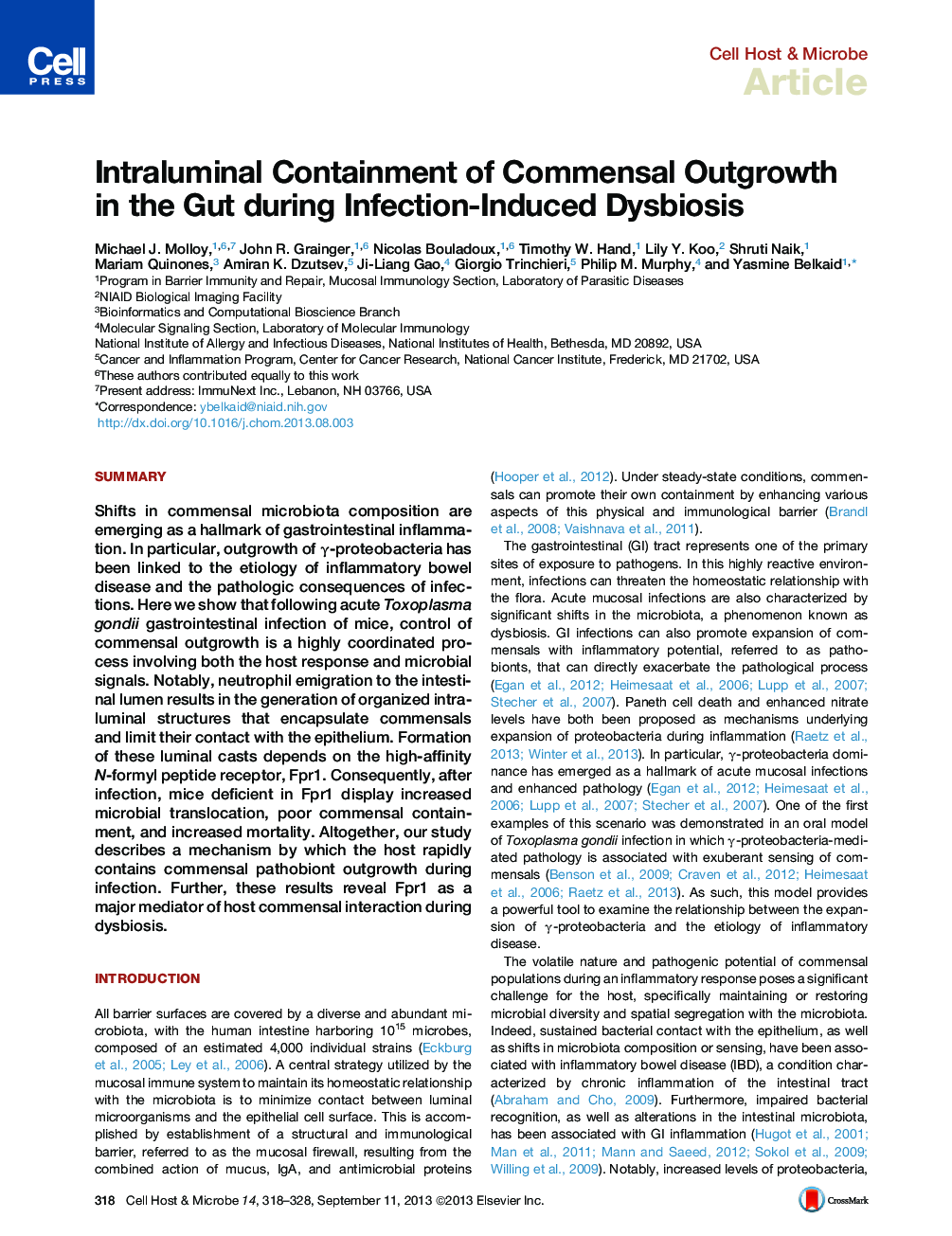| کد مقاله | کد نشریه | سال انتشار | مقاله انگلیسی | نسخه تمام متن |
|---|---|---|---|---|
| 4361107 | 1301351 | 2013 | 11 صفحه PDF | دانلود رایگان |

• Mucosal infections induce containment structures that encompass commensal outgrowth
• Luminal cast formation is dependent upon neutrophil transmigration to the lumen
• Cast formation and neutrophil transmigration to the lumen depend upon Fpr1
SummaryShifts in commensal microbiota composition are emerging as a hallmark of gastrointestinal inflammation. In particular, outgrowth of γ-proteobacteria has been linked to the etiology of inflammatory bowel disease and the pathologic consequences of infections. Here we show that following acute Toxoplasma gondii gastrointestinal infection of mice, control of commensal outgrowth is a highly coordinated process involving both the host response and microbial signals. Notably, neutrophil emigration to the intestinal lumen results in the generation of organized intraluminal structures that encapsulate commensals and limit their contact with the epithelium. Formation of these luminal casts depends on the high-affinity N-formyl peptide receptor, Fpr1. Consequently, after infection, mice deficient in Fpr1 display increased microbial translocation, poor commensal containment, and increased mortality. Altogether, our study describes a mechanism by which the host rapidly contains commensal pathobiont outgrowth during infection. Further, these results reveal Fpr1 as a major mediator of host commensal interaction during dysbiosis.
Journal: - Volume 14, Issue 3, 11 September 2013, Pages 318–328